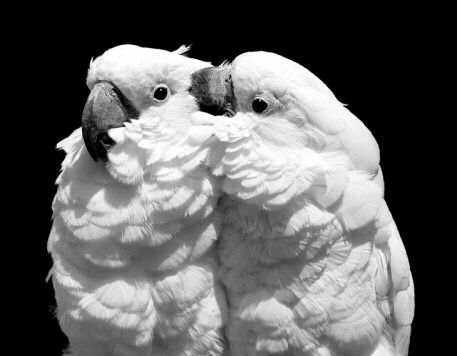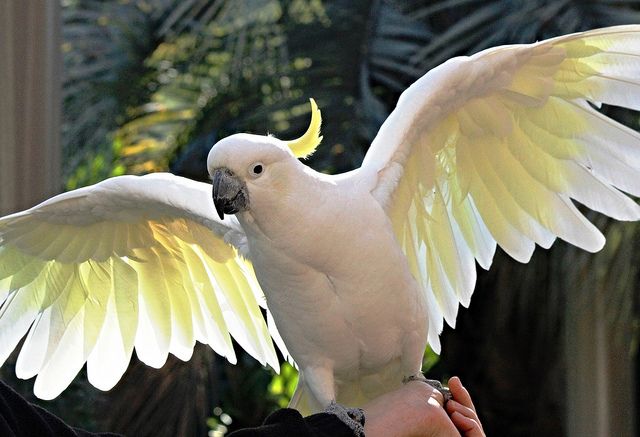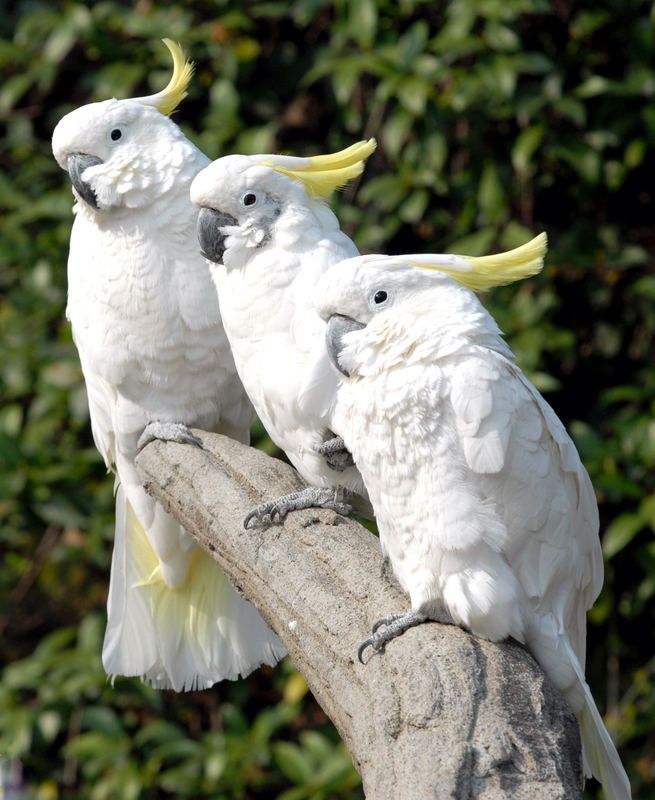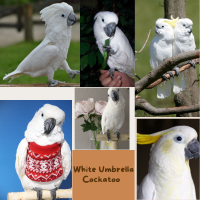The Enchanting White Umbrella Cockatoo, known for its striking white feathers and playful personality, is a favorite among bird enthusiasts. This comprehensive guide explores every aspect of the White Umbrella Cockatoo, from its behavior and lifespan to its diet and care requirements. If you’re considering adding this magnificent bird to your family, read on to discover everything you need to know.
Introduction to the White Umbrella Cockatoo
The White Umbrella Cockatoo, scientifically known as Cacatua alba, is native to the tropical rainforests of Indonesia. With their dazzling white feathers and signature crest that fans out like an umbrella, these birds are a sight to behold. Their captivating appearance and affectionate nature make them highly sought after as pets.

Umbrella Cockatoo Lifespan
One of the first questions potential owners ask is, “How long do Umbrella Cockatoos live?” The average lifespan of an Umbrella Cockatoo is between 40 to 60 years, though some have been known to live up to 70 years with proper care. This longevity makes them a long-term commitment, akin to having a lifelong companion.
Breeders and Availability
Finding reputable Umbrella Cockatoo breeders is crucial to ensuring you adopt a healthy bird. Reputable breeders will provide health records, proper documentation, and a nurturing environment for their birds. It’s essential to visit the breeder’s facility to observe the conditions and ensure the birds are well-cared for.
Variations and Colors
While the classic White Umbrella Cockatoo is the most common, there are variations, including the blue Umbrella Cockatoo and hybrids like the Umbrella Moluccan Cockatoo. Each variation boasts unique color patterns but shares the same charming personality traits.
Behavior and Body Language
Understanding the behavior and body language of your White Umbrella Cockatoo is key to building a strong bond. These birds are highly social and require regular interaction. They can be vocal, using a range of sounds to express themselves. Learning to interpret their body language—such as crest position and feather fluffing—can help you understand their moods and needs.
Talking Ability
Can Umbrella Cockatoos talk? Yes, these intelligent birds are capable of mimicking human speech and sounds. With consistent training and positive reinforcement, they can develop a vocabulary of words and phrases.
Diet and Nutrition
Providing the best food for your Umbrella Cockatoo is vital for its health. A balanced diet includes a mix of high-quality pellets, fresh fruits, vegetables, and occasional seeds. Foods rich in calcium and vitamin A are particularly beneficial. Avoid feeding them avocado, chocolate, and caffeine, as these are toxic to birds.


Cage Requirements
Choosing the right cage size for your Umbrella Cockatoo is essential. They need a spacious cage that allows them to spread their wings and move around freely. A minimum cage size of 36x24x48 inches is recommended, with bar spacing between ¾ to 1 inch to prevent injury.
Minimum Cage Dimensions
- Width: 36 inches (91 cm)
- Depth: 24 inches (61 cm)
- Height: 48 inches (122 cm)
These dimensions provide enough space for the bird to stretch its wings fully, move around, and play without feeling confined.
Bar Spacing
- Ideal Bar Spacing: ¾ to 1 inch (1.9 to 2.5 cm)
Proper bar spacing is crucial to prevent the bird from getting its head or limbs caught between the bars, ensuring safety and reducing the risk of injury.
Cage Design Features
- Sturdy Construction: The cage should be made of durable materials, such as stainless steel or powder-coated metal, to withstand the bird’s strong beak and chewing habits.
- Multiple Perches: Include various perches at different heights to encourage movement and exercise. Natural wood perches are ideal as they help maintain the bird’s feet health.
- Food and Water Dishes: Ensure the cage has easily accessible food and water dishes that can be securely attached to prevent spills.
- Toys and Enrichment: Provide plenty of toys to keep your Umbrella Cockatoo mentally stimulated. Rotate the toys regularly to maintain their interest.
Play Area
- Play Top or Stand: Consider a cage with a play top or a separate play stand where your cockatoo can spend time outside the cage. This feature allows for additional interaction and exercise.
Location and Environment
- Placement: Place the cage in a well-lit, airy part of your home where the bird can interact with family members. Avoid drafty areas, direct sunlight, or locations near kitchen fumes, as these can be harmful to the bird.
Cleaning and Maintenance
- Removable Tray: A removable tray at the bottom of the cage makes cleaning easier and helps maintain a hygienic environment.
- Non-toxic Coating: Ensure the cage’s coating is non-toxic and safe for birds, as they may chew on the bars.
Providing an appropriately sized and well-equipped cage is vital for the well-being of your Umbrella Cockatoo, ensuring they remain happy, healthy, and engaged.

Breeding and Reproduction
Breeding White Umbrella Cockatoos requires a deep understanding of their reproductive behavior and needs. They typically breed once a year, laying 2 to 3 eggs per clutch. Providing a secure and comfortable nesting environment is crucial for successful breeding.
Flying and Exercise
Regular exercise is crucial for maintaining the health and well-being of your White Umbrella Cockatoo. Allowing them to fly in a safe, enclosed space helps keep their muscles strong and prevents obesity.
Comparing Cockatoos
Many bird enthusiasts wonder about the differences between the Goffin Cockatoo vs. Umbrella Cockatoo or the Sulfur Crested Cockatoo vs. Umbrella Cockatoo. While they share some similarities, each species has distinct characteristics in size, coloration, and temperament.
Facts and Trivia
Here are some fascinating White Umbrella Cockatoo facts:
- They have a wingspan of approximately 25 to 30 inches.
- Their dark brown irises contrast beautifully with their white feathers.
- They are known for their strong bonds with their human caretakers and can become quite attached.
Common Issues and Solutions
Understanding common issues such as feather plucking, screaming, and dietary deficiencies can help you provide better care for your bird. Regular veterinary check-ups and a well-balanced diet can prevent many health problems.

Umbrella Cockatoo All Color
The term “Umbrella Cockatoo all color” typically refers to the various color variations and hybrids associated with the Umbrella Cockatoo (Cacatua alba), although the pure Umbrella Cockatoo is predominantly white. Here are some details about the color variations:
Pure White Umbrella Cockatoo
- Description: The classic Umbrella Cockatoo is known for its entirely white feathers, with a slight yellow or salmon tint under the wings and tail. They have a distinctive crest that fans out, resembling an umbrella, which gives them their name.
- Crest and Beak: The crest is white, and the beak is typically black or dark gray.
Blue Umbrella Cockatoo (Mythical/Hybrid)
- Description: The “blue” Umbrella Cockatoo is often a subject of interest, though it is more likely a reference to a hybrid or a mislabeled bird. True blue coloration in Umbrella Cockatoos is not naturally occurring and may result from selective breeding or mutations in other species.
- Hybrid Possibilities: Some breeders may attempt to create hybrids that exhibit blue tones, but these are not standard or officially recognized variations of the Umbrella Cockatoo.
Hybrid Variations (Umbrella Moluccan Cockatoo)
- Umbrella Moluccan Cockatoo: This hybrid results from breeding an Umbrella Cockatoo with a Moluccan Cockatoo. The offspring may have a mix of white with pinkish or salmon-colored tones, especially around the crest and chest.
Albino and Lutino Variants
- Albino: Although rare, some Umbrella Cockatoos may appear more pure white due to albinism, which would include white feathers, pink eyes, and a pale beak.
- Lutino: A Lutino Umbrella Cockatoo would have a yellowish tinge to its feathers, particularly on the crest and wings, often accompanied by red or pink eyes.

Conclusion
The White Umbrella Cockatoo is a delightful and rewarding companion for those prepared to meet its needs. With their long lifespan, social nature, and stunning appearance, they bring joy and companionship to any home. Whether you’re drawn to their ability to talk or their affectionate behavior, these birds make a wonderful addition to any bird lover’s life.
By following the care tips outlined in this guide, you can ensure your White Umbrella Cockatoo thrives and becomes a cherished member of your family.


